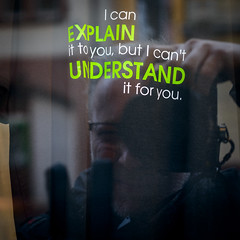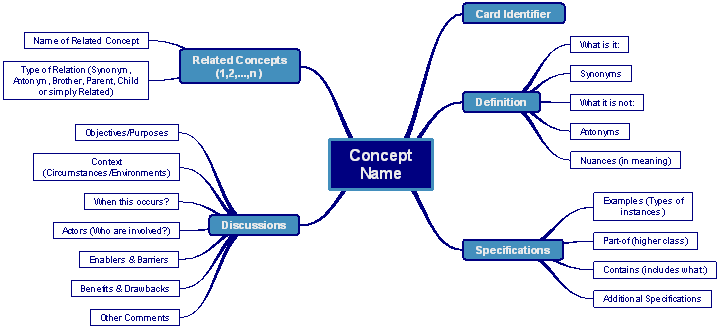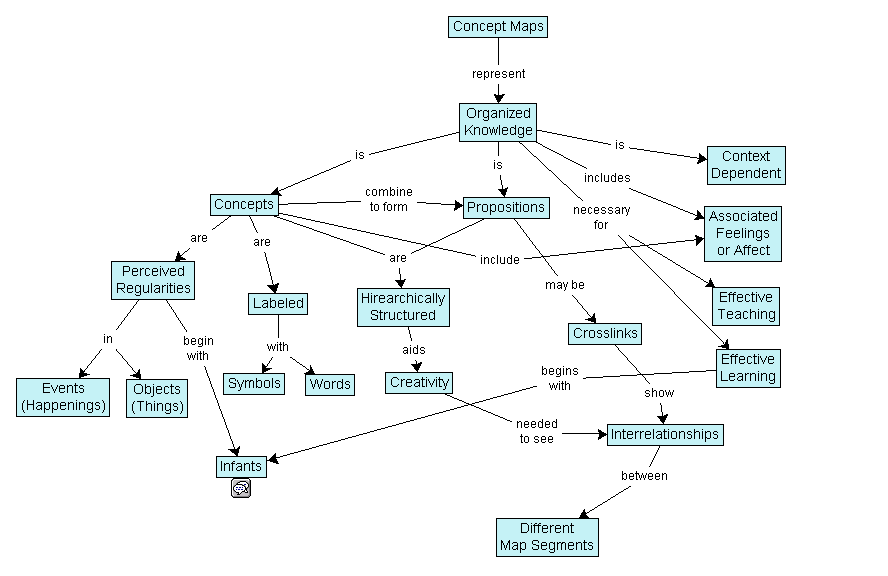Do NOT follow this link or you will be banned from the site!
Conveyed Concept
Submitted by thedosmann on Wed, 08/14/2019 - 09:24
Relevance, ad hoc concepts and analogy -PDF in trying to explain context says this: "In every case, the conveyed concept has to be contextually worked out."
Conveyed concept
 12 years ago (2007) I wrote this article and placed it on Wikipedia. 10 years later they decide they don't like it and deleted it. 10 years! It went through a peer review and countless other revisions and checks. So, I'm cleaning it up and publishing on my site 2 years after they deleted.
12 years ago (2007) I wrote this article and placed it on Wikipedia. 10 years later they decide they don't like it and deleted it. 10 years! It went through a peer review and countless other revisions and checks. So, I'm cleaning it up and publishing on my site 2 years after they deleted.
Introduction
Conveyed concept is a set phrase that denotes a concept as understood or perceived. If someone explains an idea or if an idea is conveyed by some type of medium, then that idea or concept is a conveyed concept but in the mind of the person/people to whom it was conveyed it is a concept processed within the framework of their
 understanding of that concept. That concept, being either poorly or precisely conveyed, is now a concept as understood or processed by whomever it was conveyed (verb) to and can be referred to as a conveyed (adjective - past participle) concept.[1]
understanding of that concept. That concept, being either poorly or precisely conveyed, is now a concept as understood or processed by whomever it was conveyed (verb) to and can be referred to as a conveyed (adjective - past participle) concept.[1]
"For example, we have a word as ‘refrigerator’, but we do not know what ‘refrigerator’ refers to and we simply call it a structure. Now we have a definition about the word ‘refrigerator’ like an appliance, a cabinet, or a room for storing food or other substances at a low temperature’.This definition, we call it as a concept, gives the meaning to ‘refrigerator’. Thus, structure and concept has a causality relational property such that ‘refrigerator ( an appliance, a cabinet, or a room for storing food or other substances at a low temperature."
- Collaborative conceptualization: Towards a conceptual foundation of interoperable electronic product catalogue system design,
Enterprise IS, 02, 2009.
Another example would be someone applying for a Patent. "Anyone who has been through this process understands that it takes years of back and forth mediated communication and subtle revisions in order for an examiner to understand the conveyed concept from their outside perspective."
Relevance, ad hoc concepts and analogy -PDF in trying to explain context says this: "In every case, the conveyed concept has to be contextually worked out."
Programming a computer to understand
Programming computers to understand relevance and context is a monumental task. IBM has done some work on this and concluded "Providing computers with context is not a simple exercise—it’s a complex problem for which computer scientists are experimenting with many different potential solutions."[19] Work on computer  learning can be found in a number of publications and finding a way to convey concepts is of particular interest.
learning can be found in a number of publications and finding a way to convey concepts is of particular interest.
"Execution of computer programs requires dealing with a number of nontrivial concepts. To execute a program, a system must understand numerical operations, if-statements, variable assignments, the compositionality of operations, and many more. [20] Concept Programming Attempts to influence the relationship of code and concepts.
In computer programming a conveyed concept can refer to information sent from programmer to AI, computer-to-computer, human to computer, programmer to programmer, etc. In programming an AI program, the conveyed concepts of the AI program are used as building blocks to program new concepts and link to existing ones, and it is important that the conveyed concepts are fine-tuned in order to create the correct response.
In programming, programs need to compare conveyed concepts in order to communicate a correct process or response. In this media the concepts being compared are not what was programmed (the code) but the response of the program so that the code can be changed to achieve the correct response.
This is a field referred to as machine learning. There has been a tremendous amount of work toward mapping the meaning of words across several paradigms. Most follow examples found in DOGGIE [3][4][21]
Unique
Because of the abstract nature of concept when paired with the word "conveyed", the word "conveyed" transitions to a slightly different meaning than its historical Linguistic meaning in Linguistic semantics. "Conveyed" has undergone somewhat of a Semantic change in that it is used as an adjective to express the understanding by someone of something that was communicated to them.[5] This is especially true in the context of conveying meaning. In this context the actual material or words used to convey something to ‘Individual A’ is not the subject of the question, What was conveyed to individual A?, - Instead, in this context, convey means what is 'Individual A's' understanding of what was conveyed.
 One can convey(verb) an idea to someone and say that it has been conveyed (past tense verb). The person to whom that idea was conveyed (past tense verb) now either understands the idea or not depending his conveyed (adjective) concept of that idea.
One can convey(verb) an idea to someone and say that it has been conveyed (past tense verb). The person to whom that idea was conveyed (past tense verb) now either understands the idea or not depending his conveyed (adjective) concept of that idea.
Conveyed(adjective) concept is unique in this usage as it expresses the understanding someone has to what has been conveyed (past tense verb) to them. There are a number of instances where this phrase is used and many areas where it is applied to refer to a perception of a concept, these include, but are not limited to, teaching, philosophy, computers, marketing, and others. [2][6]
Adjective use
The conveyed concept is individual in that each person will use their cognitive process to interpret the idea or concept in their own individual way. A conveyed concept is more than just the imparting of a concept or a concept that is conveyed. Once a concept is communicated it becomes a conveyed concept and unique to each individual.
The word conveyed in the phrase conveyed concept is used as an adjective describing perception or individual meaning of a concept that has been expressed.[7] In the thought process of the person who is interpreting the concept that is being conveyed they develop or construct(Cognitive linguistics) a conveyed concept of what was conveyed to them.[8] When conveyed is used as a verb then the concept can be poorly or accurately conveyed and does not hold the same meaning.
If a concept is poorly conveyed it may not be fully understood or even if the message is delivered in a precise manner the person receiving that information may draw the wrong conclusions. In either case, the conveyed concept is not what was intended to be conveyed. It is possible for several people to get the same information but have different concepts of what they heard or saw. Even if we receive the same information, we may have separate impressions.
In a room full of people, a random person comes in and walks around and leaves. If asked about what the person was wearing or looked like; the people in the room will have different recollections and, in some cases, totally opposite. This is a product of how that memory was semantically stored by the individual.
Conveying meaning
When asked "What does this painting convey to you?", a person will answer with the conveyed concept of what they think the painting means. The same is true with any abstract information that we receive through our sensory
 (Sensory analysis) processes. A billboard with marketing information is the same. The information may be perceived several ways. A person seeing this information may or may not buy the product or service depending on their conveyed concept of that information.[9]
(Sensory analysis) processes. A billboard with marketing information is the same. The information may be perceived several ways. A person seeing this information may or may not buy the product or service depending on their conveyed concept of that information.[9]
In communication the conveyed meaning of words has been the subject of studies and is an intricate part of human interaction. (CSCC) [10]
Just as a painting can convey different feelings and thoughts, so can words and word structures. Depending on dialect, language, and other factors, words can be structured so that they convey diverse meanings to individuals.
You could not expect the phrase "Big red truck" to convey the same meaning to everyone or that everyone would understand what is being inferred. it is also likely that the same three word structure cound convey something other than firetruck in other areas of the world. "Do you want a poke?" could convey differnt meanings depending on the area of the country you are in. "The whole purpose of language is to communicate meaning about the world around us " DESCRIPTIVE LINGUISTICS - STRUCTURES OF LANGUAGE
Concepts
New concepts are linked to existing concepts.[11]
A caveman discovers fire by throwing a rock into a field which hits another rock and causes a spark that in turn ignites the dry grass and a fire is born. The cave man sees the fire but has no concept of what a fire is. He walks closer to it and feels the heat; he has a concept of heat and immediately links fire to heat. He walks closer and reaches his hand toward the flame and is burned. He has a concept of being burned by the heat of the sun and links being burned to his evolving concept of fire. He watches as the dry grass is consumed by the fire and understands that the fire is consuming the dry grass and connects this with his concept of consumption which is already linked to his concept of eating. As he begins linking existing concepts, concepts that are already cross-linked, he begins building a complete concept of fire. He takes off his heavy garment and places it over the flame and the flame dies out. He considers this and using existing concepts he concludes the flame needs air to live. He considers all of this and concludes that the fire was alive and that he brought it to life. The fire ate and breathed and as it did it grew so it must have been alive. Could he talk to it? If he had not placed his garment over the fire would it have walked? Although his concept of fire is nearly accurate some of his existing concepts cause him to arrive at some wrong conclusions or at least conclusions which are not entirely accurate. To him his conveyed concept of fire is valid.
Now let's assume he meets caveman2, who also has no concept of fire. Caveman1 begins to convey to him his concept of fire. Caveman2 however has a different concept of life and when he tries to link the concept of fire to life, he is unable to. As the concept of fire is conveyed to him he constructs a similar concept of fire except he understands that the fire is not truly alive within the scope of his concept of life. So, his conveyed concept of fire is similar but also has a stark difference.
This is also true when speaking of religion. All monotheists have a conveyed concept of God and religion, but each monotheist’s conveyed concept of God differs. Each were taught and had information conveyed as children and their concept of faith is based on what was conveyed to them through words, both written and verbal, and how those around them practiced their faith or lack of faith. Some will redefine that concept as life experinces and encounters influence their conveyed concept of GOD. There are those that may be raised to believe there is a Deity and as they mature reject that concept. [12]
Not all concepts are conveyed to us. It is possible to give birth to a new concept by creating links internally.[13] But with conveyed concept we are talking about a concept being conveyed from an external media or communication and then constructing our conveyed concept based on that information and existing concepts we have developed.[14]
Example use
Consider this:
This piece of material when introduced in a specific way introduces the child to the concept of height. Once the child understands the conveyed concept they may explore that material in a multitude of ways as long as the materials are still being handled respectfully.
This piece of material when introduced in a specific way introduces the child to the concept of height. Depending on the child's conveyed concept of height, they may explore that material in a multitude of ways as long as the materials are still being handled respectfully.
If we study the first sentence, we can draw a line from material to concept of height to child and then to "the conveyed concept". Because we are depending on the child's understanding of the "concept of height" in order to continue then "the conveyed concept" is the child's understanding of that concept. The word conveyed in the second sentence is used as an adjective to describe what was conveyed to the student, the concept of height, but if the child still does not understand the concept of height then it could be said the concept was poorly conveyed and that the child's conveyed concept of height was incorrect. So, the conveyed concept could be what was actually presented to the child so they could understand the concept of height or conveyed concept can refer to how the child perceived what was presented. It is possible that the conveyed (verb) concept does not match the conveyed (adjective) concept. What was meant to be conveyed is not what was conveyed.
It is possible that the conveyed (verb) concept does not match the conveyed (adjective) concept. What was meant to be conveyed is not what was conveyed.
This is illustrated in Concept mapping, a technique which can be used by teachers to gauge the success rate of materials used in a student's understanding of a concept. This mapping can be specific to one student or to a group but it maps the conveyed concept of the student so a teacher can fine tune their methods in trying to convey the concept.[15][16][17] The Relevance theory can further explain how each of us can perceive what is conveyed to us in different ways.[18]
External links
We reviewed the manuscripts with regard to the following aspects: type of comparison, the conveyed concept of culture using the classification by Reckwitz [normative, totality-oriented, differentiation-theoretical and the meaning- and knowledge-oriented], implicit valuation of the comparisons, and the artifact of the comparison. We extracted two main lines of reasoning:
1) Universal models for the interaction between cultures and
2) investigations pursuing a differentiation of divided cultural groups.[22]
- Conveyed Concept in Training
- Conveyed Concept in programming - PDF
- Music and Concepts -PDF
- Dimensions of Literacy
- Branding and Conveyed Concepts
- Usage in grading Restaurant performance -PDF
- Usage in Teaching performance -PDF
References and footnotes
- ↑ Information and Cognitive Process-Peter K. Storkerson M.F.A. Ph.D. -PDF
- ↑ On Conceptual Struggles over “Testing”-Krzysztof M. Brzezi´nski-Warsaw University of Technology -PDF
- ↑ A thought is a program: teaching concepts to robots.
- ↑ Concept Based Optimization(Texas A&M University)
- ↑ Davis, Wayne A. Meaning, Expression, and Thought. ISBN 0-521-55513-2. External Link
- ↑ Millikan, Ruth Garrett. Language: A Biological Model. ISBN 0-19-928477-6. External Link
- ↑ Partos TR, Cropper SJ, Rawlings D You Don’t See What I See: Individual Differences in the Perception of Meaning from Visual Stimuli. . PLoS ONE 11(3): e0150615. External Link
- ↑ Two-Dimensional Semantics,
Metaphysics Research Lab, Stanford University, In The Stanford Encyclopedia of Philosophy, 2017.book chapter
- ↑ Saga Bluhme, Clara Michélsen & Johanna Orheim Strategic Brand Management:Master Papers. ISBN 0-658-00133-7. External Link
- ↑ PRINCETON FOUNDATIONS OF CONTEMPORARY PHILOSOPHY - Scott Soames:Editor- Philosophy of Language. External PDF
- ↑ NEURONS, CONCEPTS, AND CONNECTIONS IN THINKING - Arnold vander Nat
- ↑ Concepts of God
- ↑ On the Birth and Growth of Concepts -PDF
- ↑ McGriff.pdf Steven J McGriff - Assimilation Theory -PDF
- ↑ Attributed concept maps: fuzzy integration and fuzzy matching -External Link -
- ↑ Concept Mapping -
- ↑ The Role of Manipulative Materials in the Learning of Mathematical Concepts -PDF
- ↑ Deirdre Wilson and Dan Sperber -
- ↑ How conversation (with context) will usher in the AI future -
- ↑ LEARNING TO EXECUTE -PDF
- ↑ Incremental concept learning
- Cabanis, M., Martinez Mateo, M., Cruz de Echeverria Loebell, N., & Krach, S. (2011). Linking brain and culture: Universalism and differentialism. European Psychiatry, 26(S2), 449-449. doi:10.1016/S0924-9338(11)72156-3
by Jim Atkins 'thedosmann'
Share it now!
